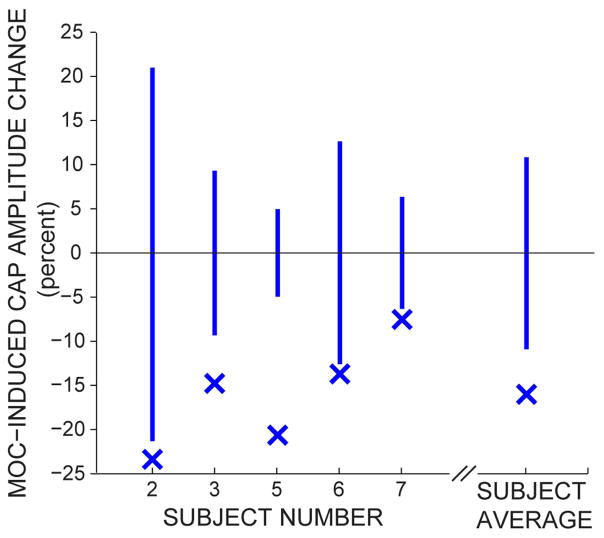Fig. 3.
For each subject and for the average across all subjects, the Xs identify the percent reduction in cochlear-nerve compound action potential (CAP) amplitudes produced by broadband noise contralateral acoustic stimulation (CAS). Negative values indicate that CAS reduced the CAP amplitudes. The vertical bars show the 95% confidence intervals for the null distribution, i.e., for the assumption that the without-CAS and with-CAS runs produced no difference in CAP amplitude.

